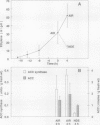Abstract
The climacteric increase in ethylene production in carnation (Dianthus caryophyllus L. cv White Sim) flowers is known to be accompanied by an increase in 1-aminocyclopropane-1-carboxylate (ACC) synthase and ethylene forming enzyme (EFE) activities. When midclimacteric flowers were exposed to 2,5-norbornadiene, which blocks ethylene action, ethylene production began to decrease after 2 to 3 hours. ACC synthase activity was markedly reduced after 4 hours and the increase in EFE activity was blocked indicating that the autocatalytic signal associated with ethylene action stimulates both enzyme activities.
Full text
PDF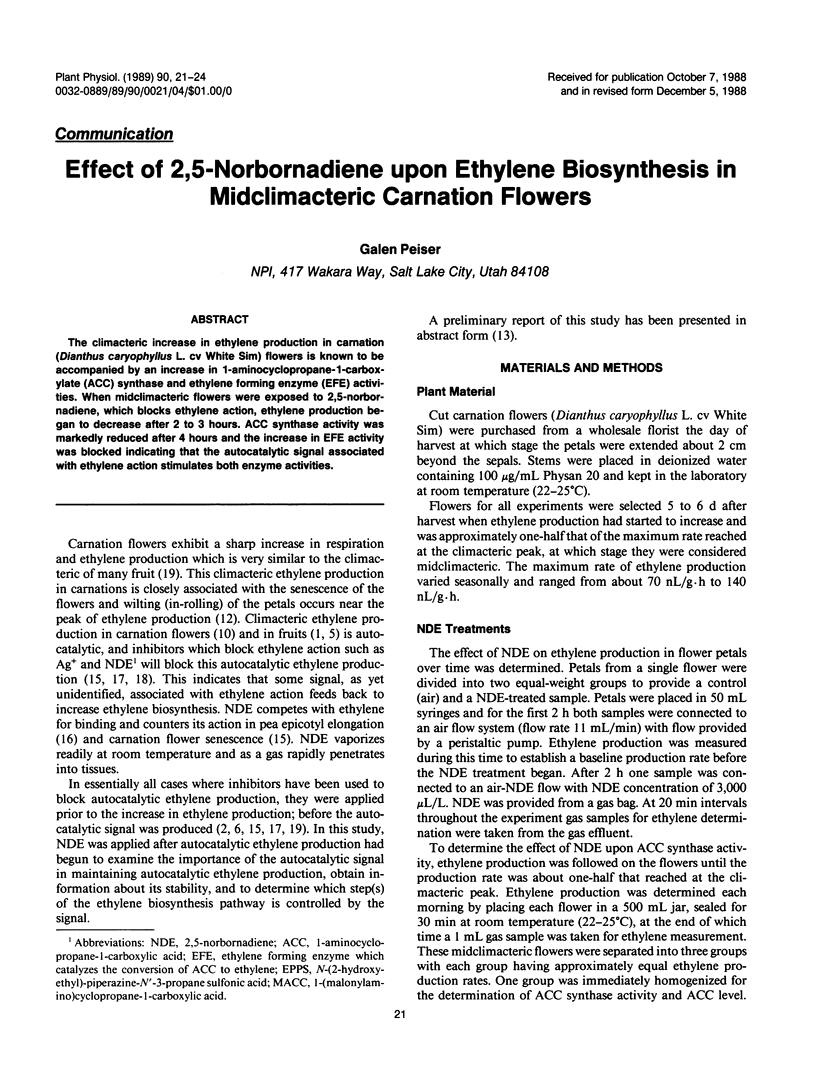
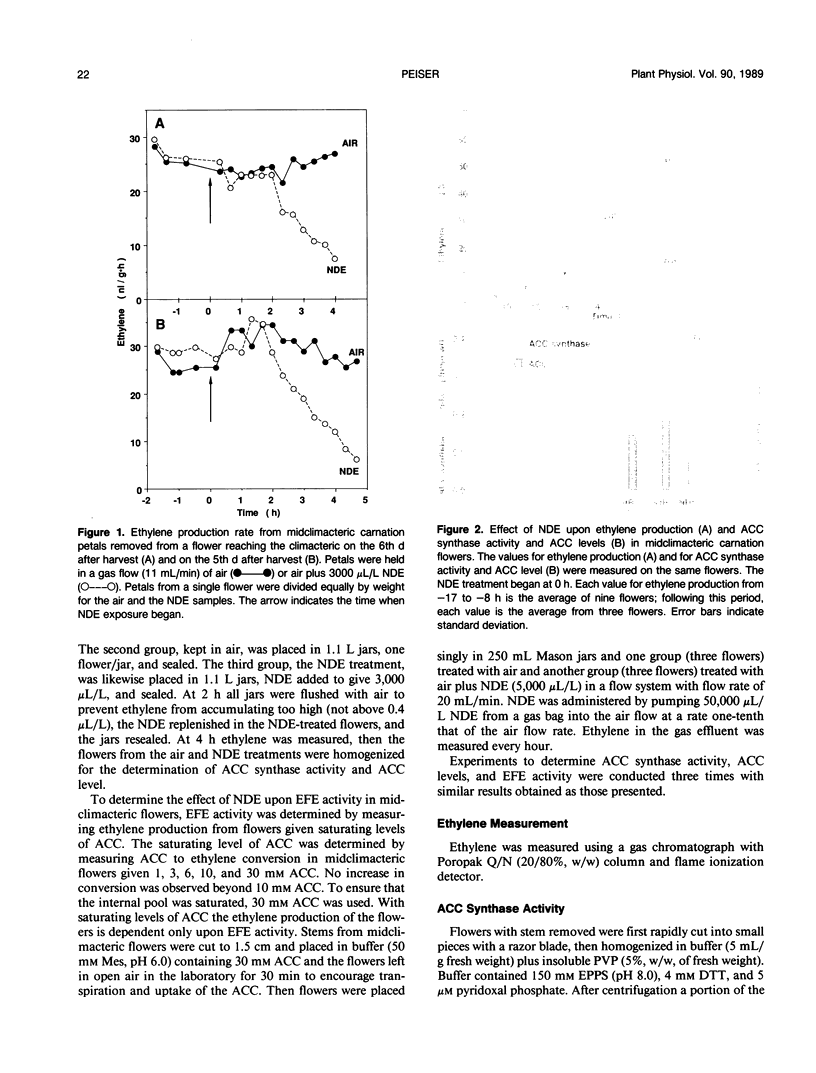
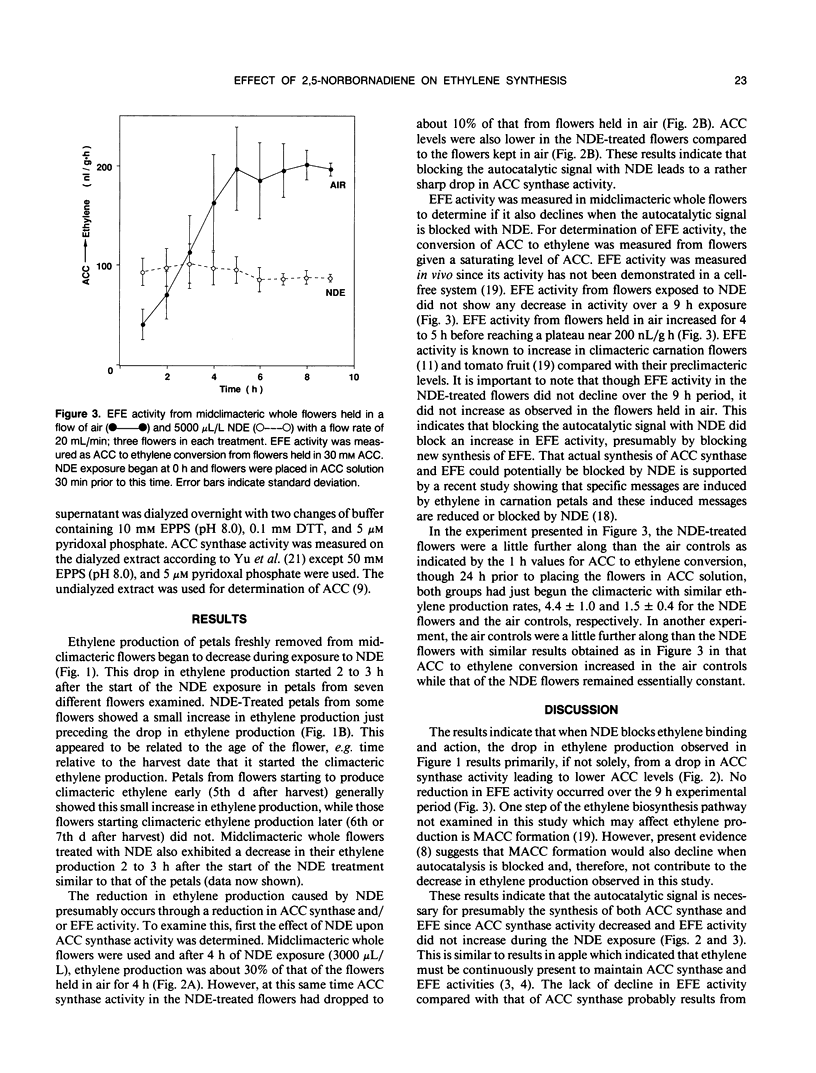
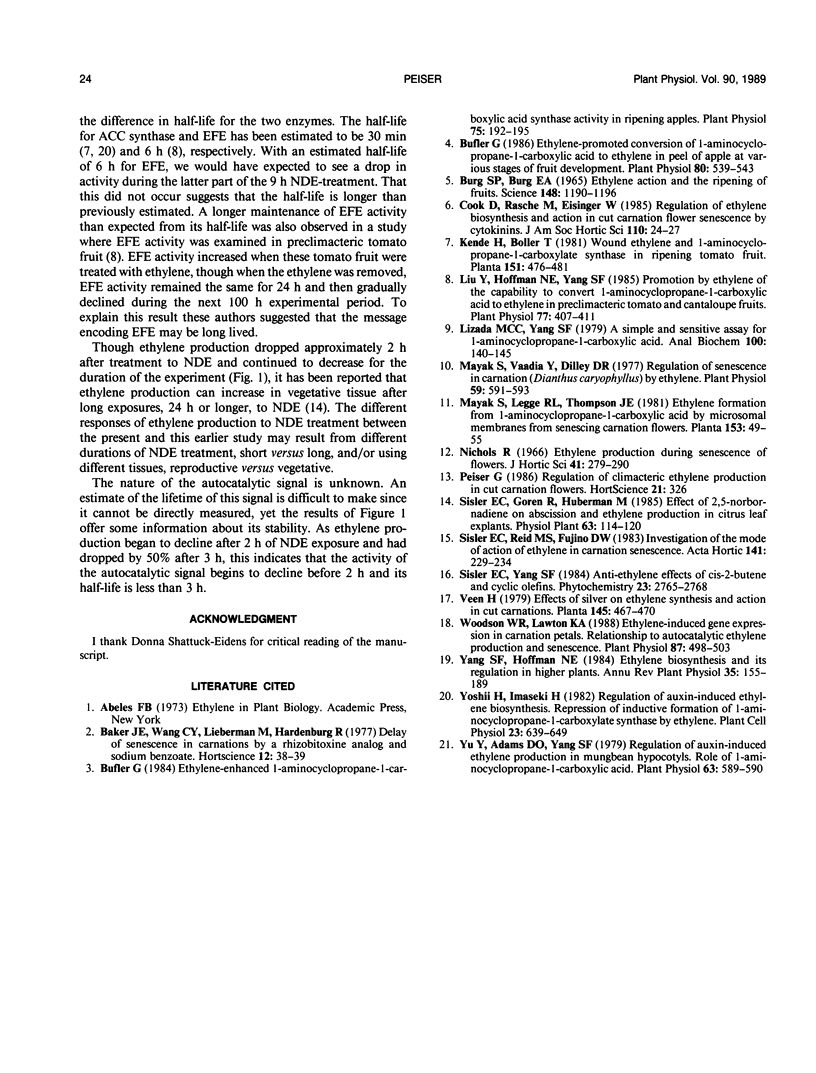
Images in this article
Selected References
These references are in PubMed. This may not be the complete list of references from this article.
- BURG S. P., BURG E. A. ETHYLENE ACTION AND THE RIPENING OF FRUITS. Science. 1965 May 28;148(3674):1190–1196. doi: 10.1126/science.148.3674.1190. [DOI] [PubMed] [Google Scholar]
- Bufler G. Ethylene-Enhanced 1-Aminocyclopropane-1-carboxylic Acid Synthase Activity in Ripening Apples. Plant Physiol. 1984 May;75(1):192–195. doi: 10.1104/pp.75.1.192. [DOI] [PMC free article] [PubMed] [Google Scholar]
- Liu Y., Hoffman N. E., Yang S. F. Promotion by Ethylene of the Capability to Convert 1-Aminocyclopropane-1-carboxylic Acid to Ethylene in Preclimacteric Tomato and Cantaloupe Fruits. Plant Physiol. 1985 Feb;77(2):407–411. doi: 10.1104/pp.77.2.407. [DOI] [PMC free article] [PubMed] [Google Scholar]
- Lizada M. C., Yang S. F. A simple and sensitive assay for 1-aminocyclopropane-1-carboxylic acid. Anal Biochem. 1979 Nov 15;100(1):140–145. doi: 10.1016/0003-2697(79)90123-4. [DOI] [PubMed] [Google Scholar]
- Mayak S., Vaadia Y., Dilley D. R. Regulation of Senescence in Carnation (Dianthus caryophyllus) by Ethylene: Mode of Action. Plant Physiol. 1977 Apr;59(4):591–593. doi: 10.1104/pp.59.4.591. [DOI] [PMC free article] [PubMed] [Google Scholar]
- Woodson W. R., Lawton K. A. Ethylene-induced gene expression in carnation petals : relationship to autocatalytic ethylene production and senescence. Plant Physiol. 1988 Jun;87(2):498–503. doi: 10.1104/pp.87.2.498. [DOI] [PMC free article] [PubMed] [Google Scholar]
- Yu Y. B., Adams D. O., Yang S. F. Regulation of Auxin-induced Ethylene Production in Mung Bean Hypocotyls: Role of 1-Aminocyclopropane-1-Carboxylic Acid. Plant Physiol. 1979 Mar;63(3):589–590. doi: 10.1104/pp.63.3.589. [DOI] [PMC free article] [PubMed] [Google Scholar]



